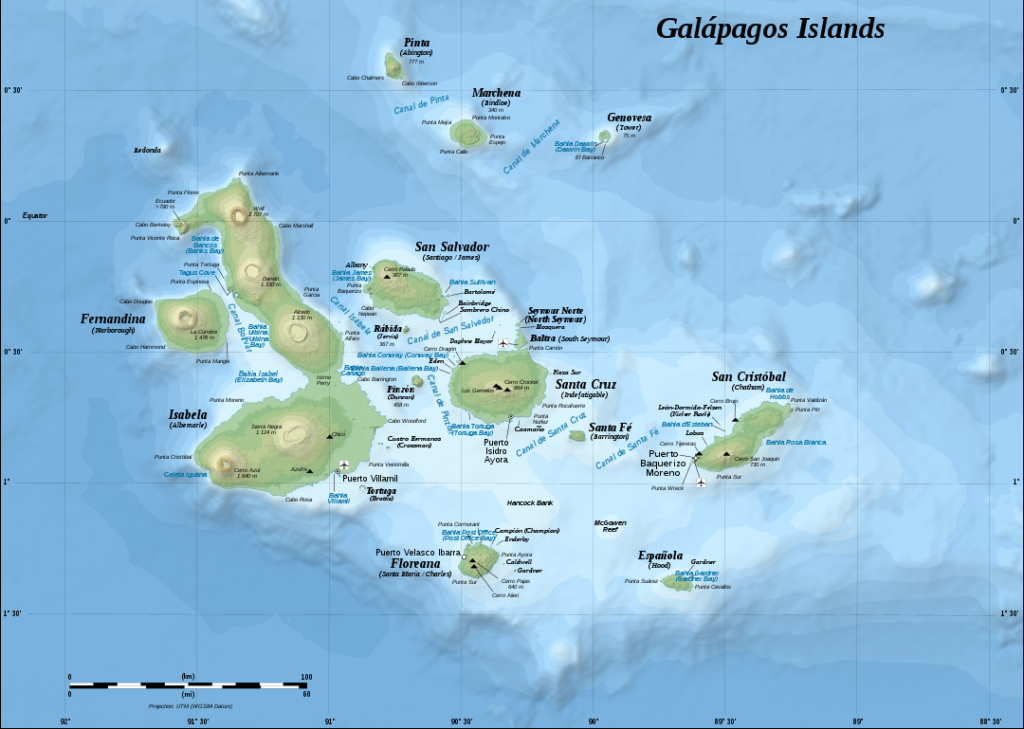Here’s our step-by-step guide to planning a trip to the Galápagos Islands, whether you’re an independent traveler or prefer to work with a local operator like Galapagos Surf Discovery:
1. Choose Your Travel Style
Decide how you want to experience the islands:
- Land-based tours (sleep in hotels on the three main inhabited islands, explore via partial or full day trips on land or by boat)
- Liveaboard cruises (sleep and travel on a boat, visit uninhabited remote islands)
- Hybrid (short cruise + hotel stays)
🔹 Land-based trips are more flexible and budget-friendly.
🔹 Cruises allow access to more remote islands and operate on fixed itineraries.
2. Pick Your Travel Dates
The Galápagos is a year-round destination, but consider:
- Warm & wet season: December–May (calmer seas, better snorkeling)
- Cool & dry season: June–November (more wildlife activity, but choppier seas and cold water means you’ll need a full wetsuit for snorkeling)
Wildlife is visible all year. Some animals (like waved albatrosses or baby sea lions) have seasonal highlights.
3. Book Flights
✈️ International:
- Fly into Quito (UIO) or Guayaquil (GYE), Ecuador.
✈️ Domestic to Galápagos:
- Flights to Baltra (GPS) or San Cristóbal (SCY).
- Book directly with LATAM or Avianca.
You are required to show proof of an outbound flight from Galápagos to mainland Ecuador. We recommend you fly into one airport and out of another e.g. into SCY and out of GPS. Plan to arrive in Quito or Guayaquil the day before your Galápagos flight to avoid delays.
4. Choose Which Islands to Visit
- San Cristóbal: Great for surfing, sea lions, and local charm.
- Santa Cruz: Most developed, good for tours to other islands.
- Isabela: Laid-back, expansive beach, volcano hikes.
- Floreana: Very remote, ideal for a quiet escape if you want to go off the grid for a few days.
San Cristóbal is our top choice for independent travelers, offering many do-it-yourself activities as well as paddleboarding, kayaking, surfing, and a variety of day trips.
5. Plan Activities and Tours
Book tours in advance if you don’t want to risk missing out on sold out tours or if you have no flexibility on dates.
Some popular tours:
- Snorkeling at Kicker Rock, Los Tuneles, or Pinzon
- Diving at Gordon Rocks (advanced) or Darwin & Wolf (liveaboard only)
- Hiking Sierra Negra volcano
- Wildlife spotting: blue-footed boobies, marine iguanas, giant tortoises
6. Reserve Accommodations
Options range from:
- Budget hostels ($30–50/night)
- Mid-range hotels ($70–150/night)
- Luxury eco-lodges and hotels ($300+/night)
Book well in advance if traveling at peak times (July–August, December–January, March, Easter).
7. Pack Smart
Essentials include:
- Reef-safe sunscreen
- Snorkeling gear (most tours provide but bring your own if you have a prescription mask)
- Dry bags, rash guards, water shoes
- Lightweight clothing, rain jacket, hat
- US dollars (cash is king, ATMs have limited daily withdrawal amounts)
8. Understand Entry Requirements
- Transit Control Card (TCT): $20 online in advance or at the airport (Quito/Guayaquil)
- Entrance Fee: $200 for adults / $100 for children under 12 (paid in cash on arrival in Galápagos)
- Travel Medical Insurance: Strongly recommended
- Yellow Fever Vaccination: As of August 27, 2025, this has been changed to a recommendation, not a requirement, for travelers who are nationals or residents of Colombia, Peru, Bolivia, and Brazil; and for travelers of any nationality or residence who have stayed more than 10 days in those countries before entering Ecuador.
9. Consider a Local Operator
A local agency like Galapagos Surf Discovery (based in San Cristóbal) can:
- Build a custom itinerary suited to your budget, interests, and abilities
- Organize adventure activities or day trips
- Coordinate inter-island flights or ferries, gear, and logistics
- Assist you with whatever you may need while you are in Galapagos
This is especially useful if you want to support the local economy and avoid overpaying for packaged tours abroad.
10. Be a Responsible Visitor
- Follow all national park rules
- Don’t feed or touch wildlife
- Stay on marked trails
- Use eco-friendly products
Your actions help preserve this fragile ecosystem.
Summary
Are you ready to book a trip to Galapagos? Would you like help creating a custom itinerary? Learn more about our travel consulting services.



